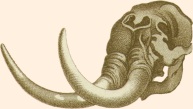

These are the reviews from November and December of 1997. For newer reviews, go back to the main book page.
 In his latest novel, veteran SF author Robert Silverberg takes us on another
trip to the world named Majipoor. Made famous by the three books of the 1980s
"Lord Valentine" cycle, Majipoor is home to a wonderful culture, beautifully
illustrated by the author's unhurried and contemplative style.
In his latest novel, veteran SF author Robert Silverberg takes us on another
trip to the world named Majipoor. Made famous by the three books of the 1980s
"Lord Valentine" cycle, Majipoor is home to a wonderful culture, beautifully
illustrated by the author's unhurried and contemplative style.
In Sorcerers the reader is treated to a slice of Majipoor history far earlier than Lord Valentine's era. The book opens with the impending death of the Pontifex of Majipoor, and the impending ascension of the Coronal to the station, and the appointment of a new Coronal. By ancient custom, the son of a Coronal may not succeed him, and the son in question, Prince Korsibar, is only too happy to abide by the rule. But other forces initiate dire intrigues, and Majipoor's entire governmental structure is soon in danger.
Throughout the book, we follow opposing sets of very different characters: Korsibar and his allies, and the heir-presumptive Prince Prestimion and his close friends. A new current in Majipoor society pervades all of the interpersonal and political activities of these groups and the events around them: SORCERY. Prestimion, in particular, ridicules the sorcerers and despises their influence. His path to fuller understanding of the sorcerers is a binding thread through his varied adventures.
The scope and plot of this book beg comparison with Robert Silverberg's 1980 Lord Valentine's Castle. Both books exhibit great polish, both take a very leisurely pace, both convey the wonder and variety of the giant planet, and both involve a quest for the throne of the Coronal of Majipoor. In the later Sorcerers, the author spends less time introducing Majipoor itself, and more time exploring the interactions between the characters. The characters of the earlier book were substantially more engaging, but this newer book offers a much more detailed look at the bad guys than its predecessors.
Overall, Sorcerers of Majipoor is a fine return to Majipoor if it is familiar to you. If not, then eschew this book as a first visit and read the original Lord Valentine's Castle instead.
Conclusion: Recommended, but best for devoted Silverberg fans
The introduction is light, but most of this book deals with very serious topic affecting the future of mankind on Earth. Most of the book is a collection of essays, and the book's title accurately describes their content. Some of the topics include:
The breadth of this book denies it the cohesiveness of some of Dr. Sagan's other recent works, but the quality of each essay is so high that the lack of a single common theme can be forgiven. Instead, the book is organized into three parts with a broad general theme for each part.
Included at the end of the book is a moving account, by Dr. Sagan himself, of his cancer and its treatment. This rare personal account will be of great interest to the late scientist's many fans.
Conclusion: Highly Recommended
The book opens with An fighting for her life in a sabotaged egg. This event forms a dividing point: the rest of the book consists of flashbacks explaining An's childhood and early career, and events after she manages to land the egg. The plot line is complex, and the relationships between the characters is pretty complex, too. Many of the themes that the author chose for An's culture have been well explored by other authors (such as Pohl, Heinlein, Vinge, and others) but the mix presented in Eggheads is creative and original.
My only reservation about this book is the manner in which some of the elements of the story are juxtaposed. Some but not all of the violence is gratuitous, and the transitions between different parts of the story are rough in some places. On the other hand, the biting, almost harsh tone of the writing reflects the uncertainty and tension besetting the characters, and that helps the reader to feel their situation.
Emily Devenport is a fairly new writer, and this book shows a great deal of potential in addition to being an entertaining read.
Conclusion: Recommended
 Questioning the Millennium is not a very long book, but it
dances through a broad selection of millennial topics. The dust jacket
bears the subtitle "A Rationalist's Guide to a Precisely Arbitrary
Countdown" - - and that the book certainly is. Each chapter bears
its share of biological, historical, and literary facts, but many these
could be obtained from a dry history text. Two things help
make each essay delightful: the consummately polished writing, and the
careful and reasoned consideration of each issue. For example, in
the section about near-apocraphyal hysteria reputed to have occurred
around AD 1000, evidence and theories for and against are offered
to the reader, and carefully compared.
Questioning the Millennium is not a very long book, but it
dances through a broad selection of millennial topics. The dust jacket
bears the subtitle "A Rationalist's Guide to a Precisely Arbitrary
Countdown" - - and that the book certainly is. Each chapter bears
its share of biological, historical, and literary facts, but many these
could be obtained from a dry history text. Two things help
make each essay delightful: the consummately polished writing, and the
careful and reasoned consideration of each issue. For example, in
the section about near-apocraphyal hysteria reputed to have occurred
around AD 1000, evidence and theories for and against are offered
to the reader, and carefully compared.
Through the entire book, issues of calendrics keep reappearing. This is certainly appropriate, for the millennium only exists on our calendar. The third chapter begins with one of the most readable astronomical plus historical explanations of our current Gregorian calendar that I have ever chanced to read. The author also describes a young man with wonderful ability to compute days of the week far into the past and future.
An interesting addition to the book are the reproductions of millennium-related art works, many of them religious, scattered through the pages. Despite its comparative brevity, Questioning the Millennium is an excellent survey of the issues, background, and excitement surrounding our upcoming calendrical landmark.
Conclusion: Highly Recommended
All of these topics are covered, more or less, by on-line tutorials, but the clear writing and well-edited code examples in this book make them more understandable. Note that not all of the capabilities described in the book are available in the core Perl distribution; some require you to download modules or more from your nearest dedicated Perl archive.
In addition to the deep Perl coverage, many chapters conclude with a comparison of Perl with other popular languages vis-a-vis the topic of the chapter. This is a nice plus if you are a real programming language enthusiast.
If you haven't already gotten this message, Advanced Perl Programming is for experienced Perl programmers only. It does not present a review of Perl syntax or anything like that, but dives right in with a "review" of references and advanced data structures. If you are interested in Perl but have not spent at least a few months using it, the 2nd edition of Programming Perl will be a better choice.
Conclusion: Recommended, for Perl experts only
In his new book, subtitled Why the Ice Age Mammals Disappeared, Prof. Peter Ward of the University of Washington explores the mystery, explaining it in clear but emotional language. This is a work for the interested amateur, the author uses little technical jargon from geology and biology. Complicated arguments between different camps in a professional community can seem picayune, but the explanations that Prof. Ward presents convey both their meaning and their importance. Extinction is no joke in the 1990s, and our understanding of a geologically recent mass extinction can further our understanding of present-day biodiversity loss.
 Basically, the controversy boils down to a' whodunit' - there can
be no doubt that huge proboscideans lived in what would become
Canada, the USA, France, and Russia. The fossil record is clear
about the existence of giant Ground Sloth and and Wooly Rhinoceros,
and equally clear about their extinction. Who did in the great
Mammoths and Mastadons? The two suspects: climate change, and
Ice Age man!
Basically, the controversy boils down to a' whodunit' - there can
be no doubt that huge proboscideans lived in what would become
Canada, the USA, France, and Russia. The fossil record is clear
about the existence of giant Ground Sloth and and Wooly Rhinoceros,
and equally clear about their extinction. Who did in the great
Mammoths and Mastadons? The two suspects: climate change, and
Ice Age man!
It quickly becomes clear which side of the issue Prof. Ward has chosen (but then, the facts are largely on his side). The various hypotheses are weighed for the reader, arguments and their authors sketched, and the indictment leveled. As the title suggests, Call of the Distant Mammoths is not a dispassionate college text. Prof. Ward shares his feelings about the Ice Age mammals: how how they lived, how he felt on occasions that he investigated their bones, how their world looked, and how they died. The personal vignettes that introduce many of the topics are genuine and enlightening, a real addition to the main paleontological theme.
At the beginning of each chapter, and on the endcovers, are really cool old illustrations of Ice Age mammals, both skeletons and life scenes. They aren't directly tied to the narrative, but they're a nice bit of atmosphere.
So, worried about the rainforests? Wondering about the effect of humanity on the environment? The fossils tell a fragmented cautionary tale of how it all happened once before. Prof. Ward puts the pieces together in a personal and convincing way. If you care about animals long extinct or newly endangered, you'll like this book.
Conclusion: Highly recommended
All reviews (c) 1998, Neal Ziring. Reviews may be reproduced in whole or
in part as long as authorship credit is preserved.
[Ziring
MicroWeb Home] [Neal
Ziring] [Julie
Ziring]
[Ziring Guestbook]
This page written by Neal Ziring, last modified 1/2/98.